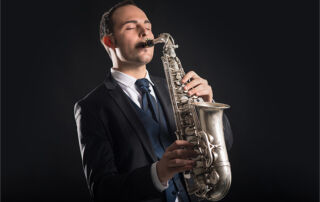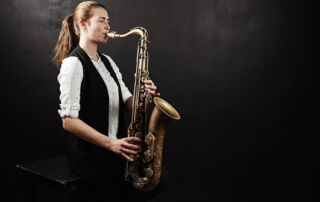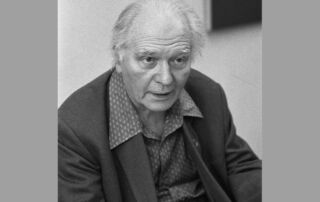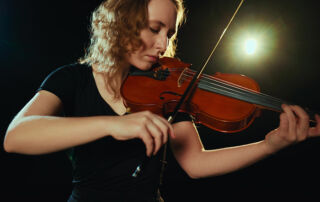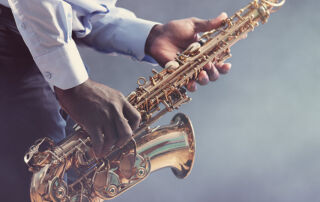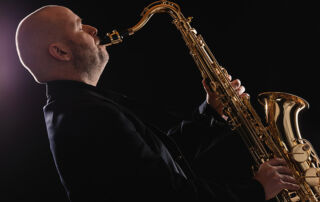What is the piano?
The piano is a polyphonic (able to play several sounds simultaneously) keyboard instrument of the struck string family.
The strings are struck by small felt-covered hammers that produce sound when a key is struck.
This instrument currently has 88 keys, 52 of which are white, and 36 are black. The white keys correspond to unaltered notes, and the black keys to altered notes (sharps and flats).
The strings are made of steel wire and are attached to a rigid frame called the tailpiece, placed above the soundboard, which is a very important part of the piano's sonority.
It has three pedals (the "lyre") operated by the musician's feet.
The left pedal (soft pedal or una corda pedal) is used to soften a note. The middle pedal (sustain pedal) holds notes already played when pressed. The right pedal (sustain pedal) allows notes to vibrate longer, even if they are no longer held.
The word "piano" is used in English and all Latin languages except Italian, where it is called "pianoforte" (a term reserved in French for antique instruments). In Germanic languages, it's called "hammerklavier" (hammered keyboard), hence the abbreviation Klavier, but Germans distinguish "flügel" to refer to the grand piano.
The harpsichord is not the ancestor of the piano, despite its similar structure.
The harpsichord is a plucked-string instrument (using the sautereau system), unlike the piano, which is a struck-string instrument (using the hammer system).
The instrument closest to the piano is the clavichord, which was no match for the harpsichord favored by all composers at the time.
The clavichord appeared towards the end of the Middle Ages. This instrument has a rectangular body. Its mellow, relatively modest sound is best suited to an intimate concert setting.
Its origins lie in the medieval monochord.
In the 18th century, it became popular in Germanic countries, Scandinavia, Spain and Portugal, but it was mainly in Germany that a repertoire specific to the instrument developed.
Production ceased in the early 19th century and resumed in the early 20th century to meet the need for renewal in the practice of early music.
Instrument makers sought to develop its sound, which remained weak, and then at the end of the 17th century the pianoforte developed by the Italian harpsichord builder Bartolomeo Cristofori (in 1698) in Florence.
He also invented a string-striking mechanism that gave a much more powerful sound than that of the clavichord. He succeeded in perfecting it shortly before 1709 and adapting it to a harpsichord case.
These strings are not made of steel, are less taut than on today's pianos, and the hammers are generally lined with leather or cork, and sometimes unlined until the 1830s.
When he invented the pianoforte, he also created the sustain pedal.
Three instruments have survived and are now in the Metropolitan Museum of Art in New York, the National Museum of Musical Instruments in Rome, and the Musikinstrumenten Museum at Leipzig University.
Between 1780 and 1890, the pianoforte was transformed into the modern piano, offering greater expressive possibilities.
In 1821, Sébastien Erard invented the double escapement repeater mechanism. This technique shortens the time before a note can be played again.
It was around the middle of the 19th century that the piano became the instrument we know today.
The keyboard has been considerably enlarged, from 54 keys to the present 88, making for an increasingly rich palette of sounds.
Piano keys are generally made of spruce or basswood.
In the past, black keys were covered with ebony and white keys with ivory. Since the use of this material has been banned to protect elephants, synthetic materials have had to be created to replace it.
Different piano models
There are two main categories of piano:
- The upright piano: everything is arranged vertically on the keyboard
- The grand piano: everything is arranged horizontally. There are several sizes of grand piano, classified from longest to shortest
Three-quarter-tailed piano
Half-tail piano
Quarter-tailed piano
Toad piano
There are many different types of piano, such as the player piano, electric piano, toy piano (used in some contemporary compositions), digital piano, and silent piano. But there are also original pianos with unusual names, such as the boat or commode piano (with a tilting keyboard to save space), the double piano (with a keyboard at each end), the giraffe piano (with a vertical tail), and the square piano or table piano (an instrument much appreciated by the petit bourgeoisie between the end of the 18th century and the second half of the 19th century).
Piano in music
The piano is one of the most widely used instruments in Western classical music, but it is also frequently used in other musical styles such as jazz, ragtime, salsa, blues...
The piano is often used to accompany the voice: lieder, melodies... in chamber music duos, trios, quartets, quintets...
Many composers have written piano concertos, but he also accompanies the dancers during their work sessions.
The easy-to-use, polyphonic and polyrhythmic piano is the instrument used in music theory classes and music schools.
The piano repertoire
The first composer to write for the piano was Muzio Clement.
Works by composers such as Johann Sebastian Bach and Domenico Scarlatti are widely played on the fortepiano, as this instrument is descended from the harpsichord. Here is a list of the composers who wrote the most beautiful piano scores: F. Chopin, F. Liszt, S. Rachmaninov, A. Scriabine, M. Ravel...
In jazz, many performers need no introduction: Michel Petrucciani, Chick Coréa, Duke Ellington, Herbie Hancock...






